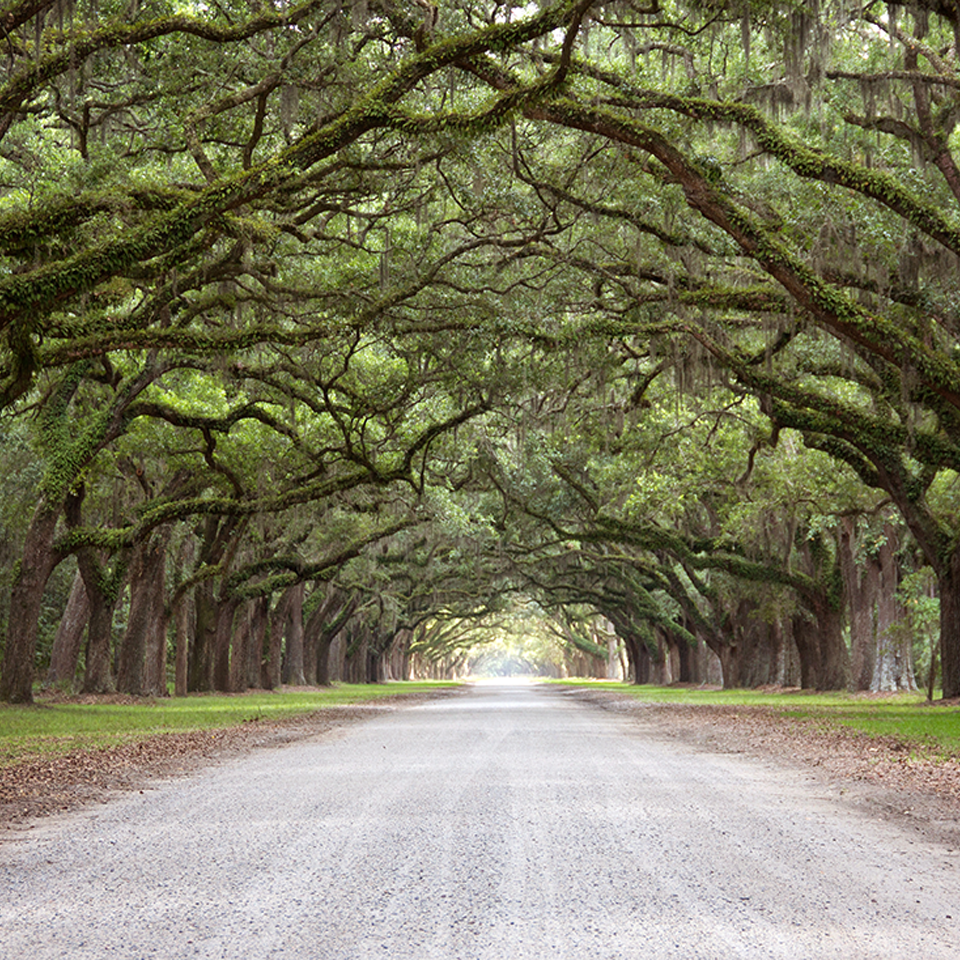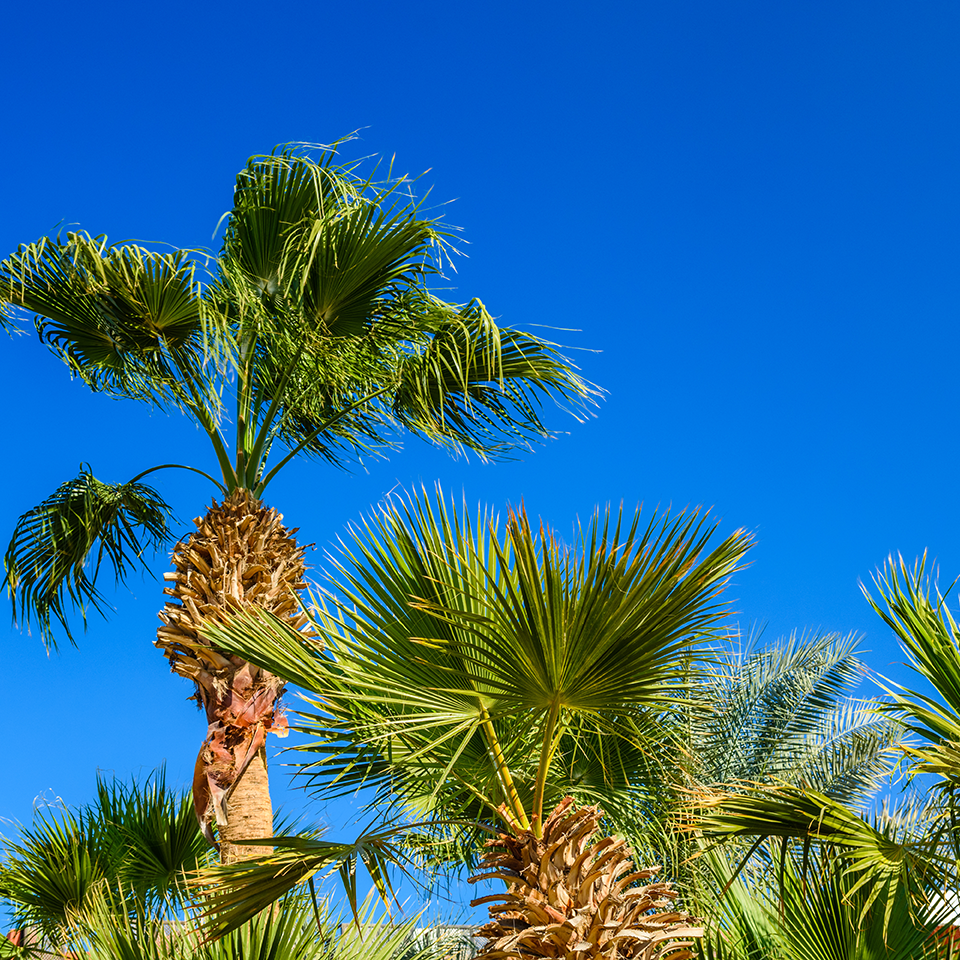FLORIDA TREES AND PALMS
The Importance of Trees
What makes a tree a tree… or, what's the difference between a tree and a shrub?
A tree is a perennial woody plant. That means that wood is the structural tissue that makes up the plant. To differentiate between trees and shrubs, a height requirement is often used. Trees are generally 13' tall or higher when full grown and are a stemmed plant.
Why should you care about trees? Well – other than their beauty, trees do have value, and it comes in many different forms. The Florida Urban Forestry Council has a nice small brochure that discusses the value of trees. They point out that healthy trees filter our water, reduce storm water runoff, help with flooding, and help to prevent erosion of the soil. Trees filter the air we breathe. They help to reduce pollution. Did you know that 40 trees will remove 80 pounds of air pollution every year?
Need more reasons to care about trees? From a purely monetary point of view, it has been documented that a business district shaded by trees will generally see an 11% increase in business, and 1 large healthy tree in your front yard should yield you a 1% increase in the sale price of your home. For more information on the Florida Urban Forestry Council, you can read their past newsletters online here.
Florida Trees
Live Oak – also called Southern Live Oak – Quercus virginiana
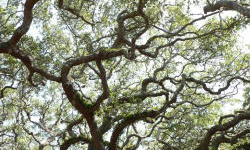
Live oaks are abundant in this area of Florida. When mature they can easily reach 40 to 50 feet in height and the trunks usually grow to 3 or 4 feet in diameter. Branches can be close to the ground and the limbs can spread out of huge distances. When left in their natural state, the crowns of the trees are very broad and have a rounded top. They can live for more than 50 years and are considered to have good resistance to wind.
Live oaks are native to America and to Florida and grow particularly well in the sandy soils found along the coast. It is common to see Spanish Moss draping the limbs of live oaks. Pruning of these magnificent trees is particularly recommended, in order for them to maintain their structural integrity.
Water Oak – Quercus nigra
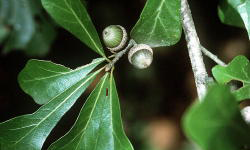
Water Oaks are another of the large shade trees native to America and Florida. They are faster growing than Live Oaks and as their name suggests, they tolerate wet and swampy areas.
When mature, these trees can easily grow to 50 or 60 feet in height with a spread of 60 or 70 feet. These trees need to be pruned when they are still young, in order to develop a strong structure.
Eastern Redbud – Cercis canadensis
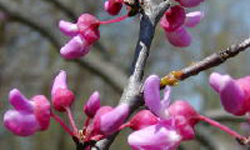
The Redbud tree is native to Florida and can be found throughout St. Johns County and Flagler County. It grows fairly quickly and is a showy tree.
The flowers appear before the leaves and can range from the palest pink or white to a deep magenta color. It is common for Redbuds to grow to 20 or 30 feet tall. Pruning is needed to maintain the structural integrity of the tree.
Southern Magnolia – aka Bull Bay - Magnolia grandiflora
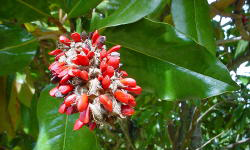
Magnolias are a magnificent native Southern evergreen tree. If you have one, you know about the beautiful and fragrant blossoms that it produces in late Spring and sometimes through the Summer.
It is not uncommon for a Magnolia to reach 60 to 80 feet in height. Their dark leathery leaves with the fuzzy undersides make a wonderful display.
Red Maple – also known as Swamp Maple - Acer rubrum
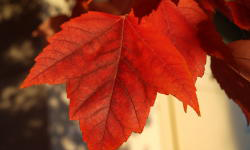
The Red Maple is a Native deciduous tree easily reaching heights of 75 feet. As its alternative name suggests, it grows best in wet areas. This is a deciduous tree that produces amazing fall colors of leaves, from yellows to oranges to reds.
A cultivar called "Red Sunset" does very well in our southern landscapes as it is designed to handle zone 8. Pruning is advised to maintain strong structural integrity for the tree.
Sycamore - aka Planetree, Buttonwood - Platanus occidentalis
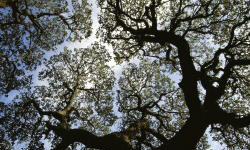
This tree is native to Florida and is a fast grower. When mature, this tree can grow to upwards of 90 feet in height.
This tree is most notable for its white bark that peels off in patches. It is better suited to wet areas than dry areas. It does tend to be a messy tree although the shade it produces is welcome in Florida summers.
FLORIDA TREES AND PALMS
The Importance of Palms
Palms can technically grow as trees, shrubs or vines.
Palms are characterized by large evergreen leaves and all are flowering plants. There are more than 2600 species of palms and they are found in almost almost climates, from deserts to rainforests.
Palms are extremely important ecologically. Some of the products and food that come from palms are dates, coconuts, palm oil, carnuba wax, panama hats, rattan, thatch, saw palmetto, and vinegar.
Palm Trees
Sabal Palm – aka Cabbage Palm or Palmetto - Sabal palmetto
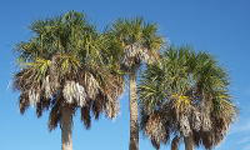
The Sabal Palm is the state tree of Florida. It can easily reach 90 feet in height and is extremely salt tolerant. It's also frost tolerant. Both of these weather tolerances allow it to be widely found along the coast of Florida.
Sabal Palms grow from one trunk, with no branches. White flowers on a long branch generally appear in the summer and are then followed by black fruit.
Needle Palm – Rhapidophyllum hystrix
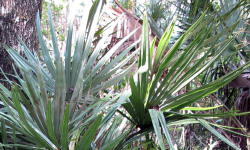
Needle palms are native to both northern and central Florida. They have attractive fan shaped leaves and can grow to about 5 feet high.
They can be found with a single trunk or growing in clumps. Although they are a nice low growing palm, as the name suggests, the needles are sharp.
Saw Palmetto – Serenoa repens
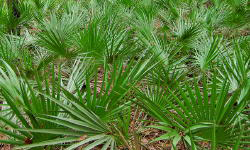
The Saw Palmetto is a type of palm tree and is native to Florida. It is low growing, to only about 4 feet, and has fan shaped leaves.
They are a shrub type of palm. You see these most commonly in lots that have been naturalized. They do not transplant well.

